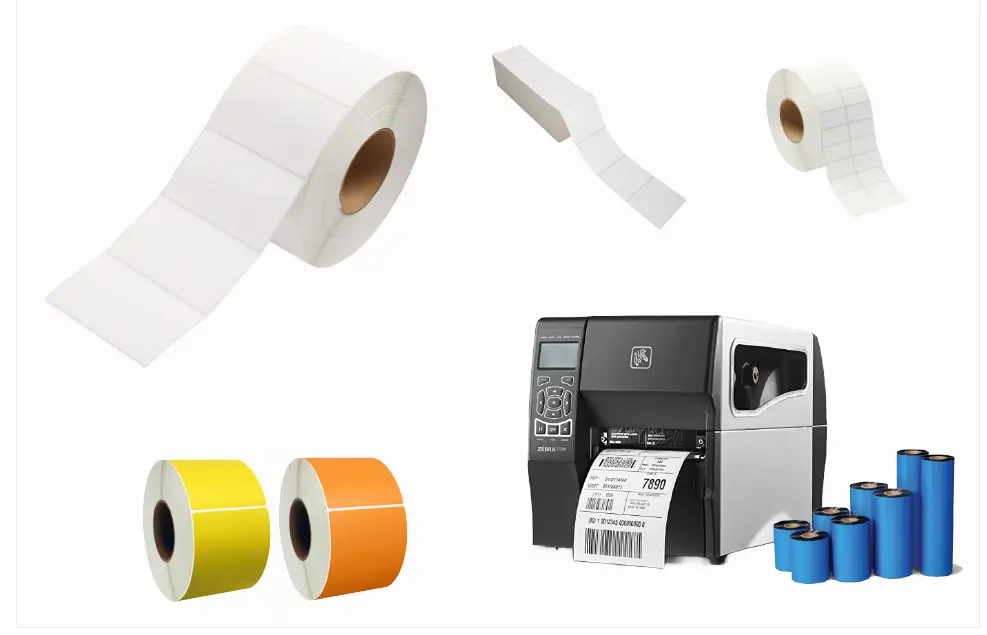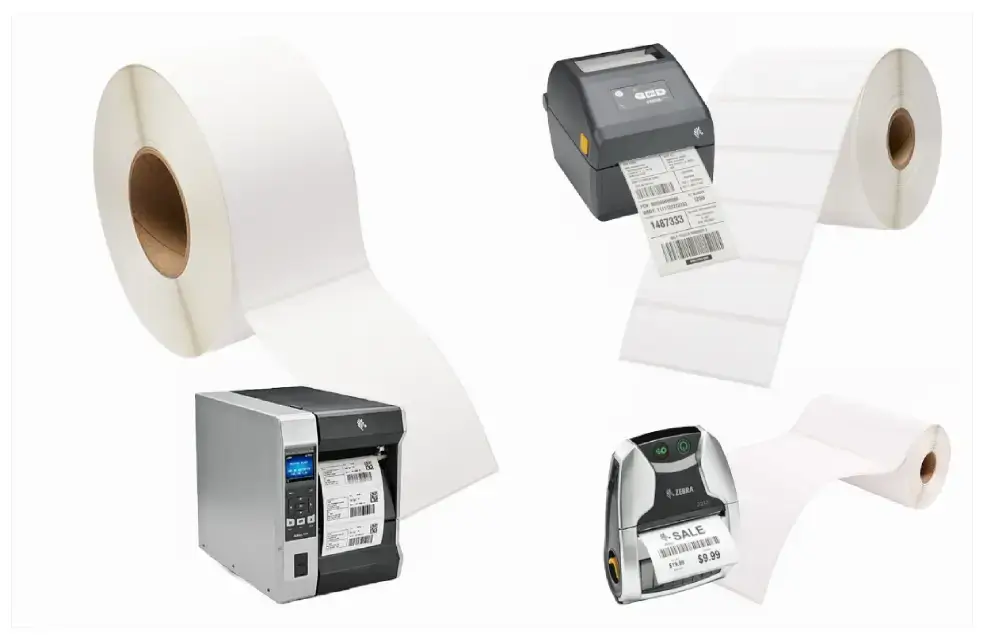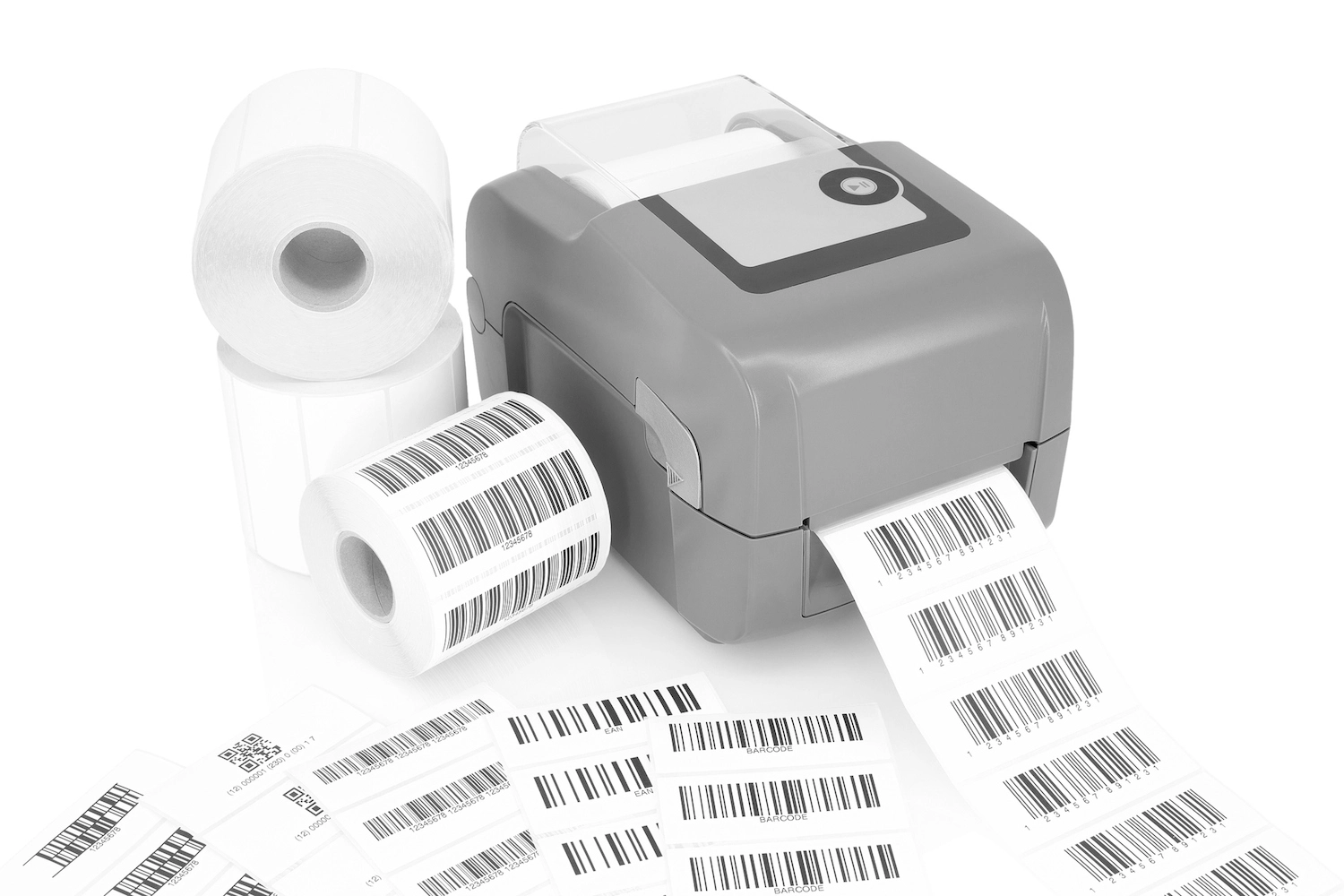Is Thermal Transfer or Direct Thermal Label Printing Right For You?
Using Thermal Transfer or Direct Thermal technology for printing your barcodes on Thermal Labels
The two current leading thermal label printing technologies, both in which we specialize, are direct thermal and thermal transfer. This article highlights all the differences between the two thermal printing technologies for label printing, and hopefully this article can help you decide the best printing method for your labeling requirements.
A brief comparison: direct thermal is only for short term applications. It is lower in cost and requires no ink, toner, or ribbon, however it only prints in black. Thermal transfer printing is for longer term applications requiring a high print quality. Thermal transfer printing requires a ribbon and can print in color.
The biggest difference between thermal transfer and direct thermal printing is transfer printing requires a ribbon whereas direct thermal printing does not.
Controlled heat is the main component in thermal printing; thermal barcode label printers work by using controlled heat to apply an image onto the label.
Thermal label printers, both industrial and mini-desktop types are perfect for barcode printing since they produce accurate and high-quality images that have very good edge definition. Sharp print makes the scanning of barcodes easier. Thermal printers are designed to print within very tight spaces and produce the exact bar widths to the thousandths of an inch (x dimension) every time they print.
With direct thermal printing, the print head applies heat to coated thermal labels turning them dark when heat is applied to specific areas of the label. There is zero consumption of ink or toner, and you will need a supply of direct thermal label material.
In contrast, in the thermal transfer printing process, the print head heats a ribbon that transfers wax or resin to the paper or film labels, leaving blank labels printed in either black or color.
THERMAL TRANSFER LABELS
DIRECT THERMAL LABELS
Thermal Transfer Label Printing
Thermal Ribbon Required
Advantages of Thermal Transfer Printers:
- Provides excellent image quality, is durable, and can be used for many applications
- Accepts a greater range of media such as paper and films including polyester and polypropylene materials
- Creates extremely durable drum labeling, storage, freezer, weatherproof, asset tags, and other labels requiring special properties
- Excellent for harsh environments and can withstand extreme temperature, ultraviolet exposure, chemicals, sterilization, certain solvents and more
- Can print in color and black and white
Disadvantages of Thermal Transfer Printers:
- High operating cost
- Changing ribbons can be a difficult and timely process
- More time required to load the media compared to direct thermal printing
- Ensuring correct ribbon for label material is always necessary
- Lower grade ribbons can cause an excessive build-up of ink, requiring more frequent cleaning
- Disposal of used ribbons can be considered not environmentally-friendly
*Thermal Ribbon Required For Thermal Transfer Printing
Thermal printer loaded with thermal transfer labels and Ribbon
Thermal Transfer printing applications include: Shipping and distribution, mailing, product identification; circuit board tracking; permanent marking and identification; samples and file tracking; asset tagging; inventory identification; retail and general office, certification labels such as UL/CSA, archive, laboratory specimens; cold storage and freezers; and weatherproof and waterproof outdoor applications
For more reasons why Thermal Transfer Labels has an advantage read this article
Direct Transfer Label Printing
No Ribbon Required
Advantages of Direct Thermal Printers:
- Cost less to operate than inkjet, laser, impact, and thermal transfer printers
- No ribbon, and no ink or toner is ever required
- Durable and easy to use
- More environmentally friendly since you do not have to dispose of used ink ribbons.
Disadvantages of Direct Thermal Printers:
- Thermal media images may fade over time
- Overexposure to heat can cause material to darken and become unreadable
- Label material is prone to marking if rubbed or scuffed extensively
- Limited choice of direct thermal label materials
- Causes greater wear to the printhead, therefore expect to replace the print head more often
- Only print in Black
Direct Thermal printing applications include: shipping labels, distribution, identification, freight packaging including compliance labels, inventory, receipts, label coupons, event tickets; citations and parking tickets; name tags; visitor passes; other short term labeling applications and more.
*No Ribbon Required For Direct Thermal Printing
Desktop printer with printer direct thermal labels
For more reasons why you should choose Direct Thermal over Thermal Transfer read this artilce
STANDARD THERMAL LABEL MATERIALS TECHNICAL DATA SHEETS
Start looking for the exact material you require for your labeling application here
Two popular thermal label materials:
Our standard white thermal transfer label paper. For 3" core and fanfolded products.
Our standard white direct thermal label paper. For 3" core and fanfolded products.
RESOURCES
Wikipedia on Thermal Transfer Printing
Wikipedia on Barcode
Getting Started with Thermal
Wikipedia on Thermal Printing
Barcode Label Knowledge Center






